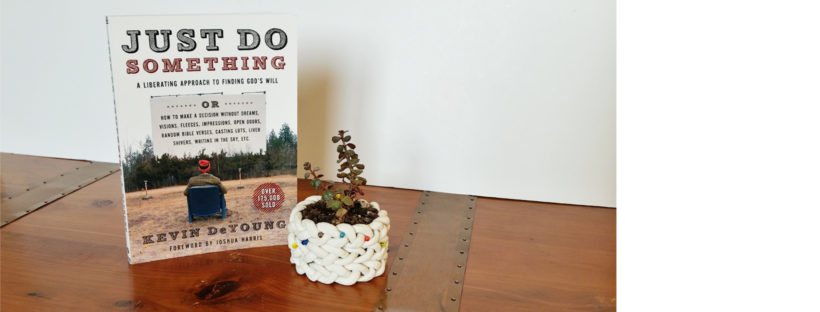• • • • • • • ► After writing my book, I’ve been surprised to look back at my schooling and see that I wasn’t explicitly preparing to write a book. In fact, writing wasn’t one of my favorite subjects. But, boy, am I glad it was important to my mom that I learn to write!
I remember doing a unit study on snails. I had chosen the subject myself, and I was very excited to read books about snails, sketch snails, design an essay outline, and finally, write the essay. I even had due dates for various steps of the unit study. This project made me feel very grown-up, and I remember it vividly.
During this timeframe, I remember feeling confused about how to put words down on paper. I didn’t know how to organize my words, how to decide the flow of ideas, or how to add variety to my sentences. This made writing frustrating.
In middle school, my mom started using materials from the Institute for Excellence in Writing. The course I remember was led by Andrew Pudewa. The taped lectures were held in a live classroom setting with students following along off-camera. Mr. Pudewa had a large wipe-off board to demonstrate his concepts.
I dreaded watching these videos. Why? I dreaded having to write. Though I’m smiling at this now, I was not smiling then. Mr. Pudewa would explain about persuasive essays, the very short sentence, sentence openers, and other writing techniques, and with clipboard and lined paper in hand, I scrawled away at his assignments.
After much practice, I began to see some light. The writing structure and various techniques slowly felt more natural, and I began to find freedom in this structure. Andrew Pudewa’s tips helped me write my essays for the SAT, the ACT, and CLEP’s English Composition with Essay (now replaced by College Composition), as well as other informative and persuasive essays during high school and college.
Ironically, the writing DVDs I wished would disappear have given me some of the most lasting skills from school. I still use Mr. Pudewa’s techniques, as they give me a framework to begin writing with. Do I need to explain a concept? Start with a 5 paragraph essay. For a longer work, simply expand the same essay format to write a 5 paragraph essay for each of three subtopics relating to the concept. Pudewa’s framework has the capacity to be stretched and tailored to fit many writing applications.
He also gives helpful advice for writing the persuasive essay. I know I asked myself, “Why would I need to know how to write a persuasive essay? I’m not on the debate team. When will I need to persuade someone with my writing?” In fact, this is something used all the time. Of course I needed to know how to write a persuasive essay for the SAT and the ACT. However, we also use persuasive writing to share our opinions, comparing our thoughts to those of others and substantiating those thoughts. We even use persuasive language just to convince someone to read what we have written. For me to learn how versatile the persuasive essay is might be the best reward of using Teaching Writing: Structure and Style and the Advanced Communication Series.
If you are a homeschool parent looking to give your children writing tips that can carry them from school papers to college classes to life beyond formal education, I highly recommend courses from the Institute for Excellence in Writing.
As an experiment, I wrote another review right after finishing the one above. This time I used the techniques I remembered from the writing courses.
• • • • • • • ► It was another afternoon on a school day. We were preparing for our writing session, and I was dreading it. Why did I need to learn these very specific writing methods? I knew how to write a paragraph. And if my assignment was longer than that, I just put several paragraphs together. But something inside of me didn’t agree. I didn’t like the uncertainty I felt when writing. I wanted to know how to make a flowing article, how to grab my reader’s attention, and how to feel confident when I began writing.
Difficulties in writing
As a youngster, I found writing frustrating. I seemed to never quite know how to write. Should I just put down some words until the word count was reached? How did I not make all my sentences sound the same? Where was the fun in writing? I remember my mom firing up the Student Workshop DVD included in the Teaching Writing: Structure and Style course for writing time. My mom, sister, and I, clipboards and lined paper in hand, would sit and follow along with Andrew Pudewa as he demonstrated his writing techniques. I was overwhelmed by some of the ideas he presented. Did I really have to remember to write an outline, vary my sentence openers, and include a very short sentence?
Practice makes writing comfortable, faster
Despite my reservations, I began to get the hang of these techniques. Through repetition, I could see I was building speed and confidence in my writing. It was easier to write! I began honing my persuasive essays for the SAT, ACT and CLEP tests. I no longer felt lost when I was given an assignment: I had a backbone structure that could be adapted to my needs. Did I need to give my opinion? Time for a five-paragraph persuasive essay. Was it time for me to explain something? I would pull out the five-paragraph explanatory essay. If I needed to write in greater detail, I would just create a five-paragraph sandwich, with three subtopics each receiving their own five-paragraph essay to support the main topic.
Lifelong benefits
I finally understood why I had needed to learn writing structure. From this framework, I could explain a topic clearly to my reader and access several trusty techniques to draw on when my writing well ran dry. I had been awakened to the fact that persuasive writing happens all the time! I needed persuasive writing to persuade my reader to take time to read my collection of words. I needed to learn how to organize my research in a comprehensible explanatory essay. In short, Teaching Writing: Structure and Style and the Advanced Communication Series taught me that writing is versatile. It is a tool that can be wielded to great results.
Worth the effort and time
I’ve been using these techniques to write this review. I have forgotten some of the rules I learned, but the framework remains. I am able to use writing to express a point of view, to share a review, and to better demonstrate why I feel the way I do. These techniques go far beyond school tests—they help at work and online. With these results, I can highly recommend the Institute for Excellence in Writing to homeschool parents and others who wish to bring a sense of command to the area of writing, either for themselves or their children.
• • • • • • • ► For more information, see the Institute for Excellence in Writing’s website: http://iew.com.
This is an unsponsored review to share one of my favorite resources.
![]()


